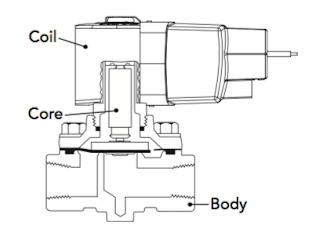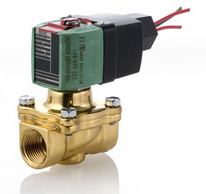Lead is a highly poisonous substance. Manufacturers of drinking water fountains, reverse osmosis systems, coffee makers, and commercial kitchen equipment are affected by strict US safety standards. Soldering flux having a lead content of more than 0.2 percent, or a weighted average of 0.25 percent lead in the wetted surfaces of pipes, pipe fittings, plumbing fittings, and fixtures, cannot be used in a lead-free system. Lead-free is a cumulative term under the law.
As a result, Ives Equipment and ASCO offer various lead-free valve options that comply with the new rules, are NSF certified, and are available in the industry's most comprehensive range of pipe sizes, pressure or temperature ratings, and flow coefficients.
Customers can meet the safety regulations for components of purifying water systems by using reliable, readily available NSF-certified fluid control products and solutions. ASCO offers the broadest selection of pipe size, pressure or temperature ratings, and flow coefficients in the market, all of which meet the new rules.
LEAD-FREE BRASS SOLENOID VALVES
ASCO offers lead-free brass construction in their general service solenoid valves with the same proven performance, reliability, and quick availability as their brass solenoid valve equivalents.
PLASTIC AND COMPOSITE SOLENOID VALVES
Solenoid valves made of composites or plastics have the benefit of being lead-free from the outset. They come in a variety of pipe diameters and shapes, including those used in drinking water systems. For residential and commercial drinking water services, these valves are presently possibly the most popular option. ASCO offers a comprehensive selection of NSF-certified composite valves to fulfill the needs of the industry.
STAINLESS STEEL VALVES
Stainless steel, another lead-free option, provides compliance in a durable metal body. This material's valves have the most extensive range of properties in categories, including pipe size, pressure or temperature ratings, and flow coefficient in the industry (Cv).
For more information, contact Ives Equipment.
877-768-1600
https://ivesequipment.com







